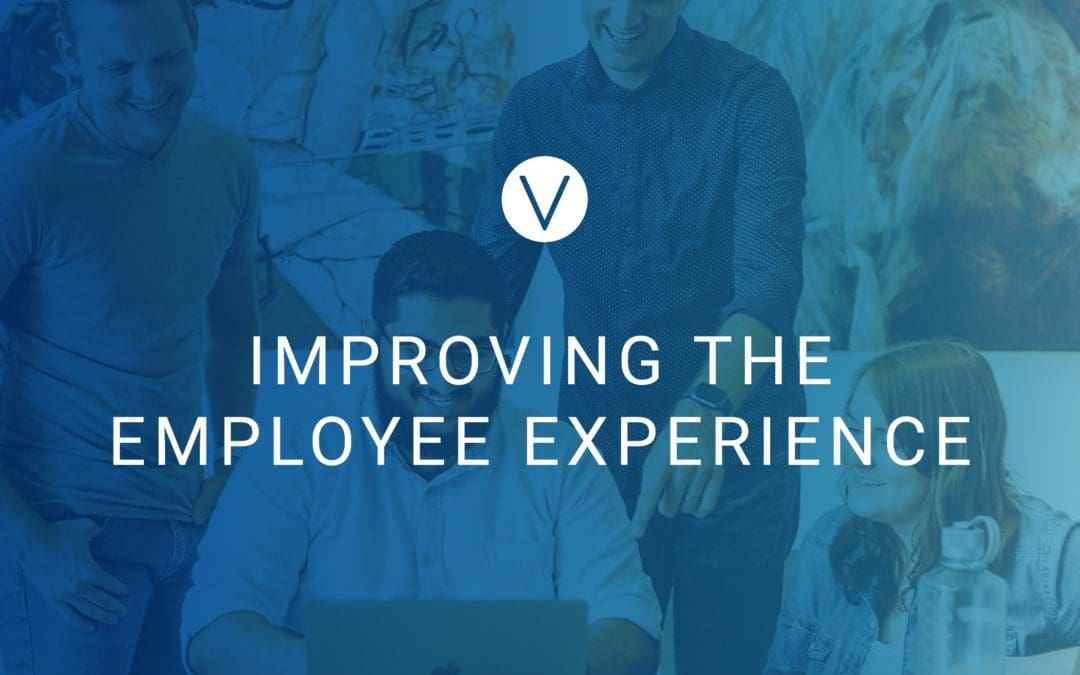 Creating a great employee experience can not only have a positive impact on the employees themselves, on the overall success of the company. An Achievers study found that 31.3 percent of employees are engaged but feel their company could do more to improve the employee experience. A great place to start is with defining your Employer Value Proposition, or EVP. Once you’ve defined who you are and what you stand for, further define ways to keep your employees happy, inspired and productive:
Creating a great employee experience can not only have a positive impact on the employees themselves, on the overall success of the company. An Achievers study found that 31.3 percent of employees are engaged but feel their company could do more to improve the employee experience. A great place to start is with defining your Employer Value Proposition, or EVP. Once you’ve defined who you are and what you stand for, further define ways to keep your employees happy, inspired and productive:
Start with onboarding
A positive employee experience should begin with the very first day. Harvard Business Review found that 33 percent of new hires often look for a new job within their first six months on the job. This quick turnaround can often be attributed to their onboarding experience. An onboarding experience may include a new employee orientation program, but it should go beyond that. New employees should have a clear idea of expectations, learn how to best complete assigned tasks and determine who can help them accomplish their duties. Setting up meetings or calls with a variety of employees, not just the ones that are a part of their immediate team, will also help them to acclimate and feel more comfortable sooner.
Establish strong leadership
A manager’s role is critical to influencing employee experience, especially with remote work. According to the Gallup Business Journal, 70 percent of the variance in team engagement across business units is explained by the quality of the manager. Managers can provide messages about the business’s goals and their company’s strategy so they have a clear sense of the organization’s vision in addition to their role. Oftentimes, employees will leave bosses, not organizations, so establishing a solid relationship is key to creating a positive experience. In addition to supportive managers, mentors can help welcome employees as they navigate the first weeks and as they grow. Assigning mentors can help new hires become comfortable with asking questions and leads to clearer communication. This can also help them to form new relationships.
Listen to employees
To create the best experience possible for employees, it’s important to understand their needs and concerns. A Salesforce report found that employees who feel their voice is heard at work are nearly five times more likely to feel empowered to perform their best work. However, this will need to be encouraged so team members feel comfortable speaking up. Use company-wide surveys to get feedback and implement stay interviews to proactively keep communication open with employees. Stay interviews allow for open dialogue between managers and employees to identify their motivation for staying and what is and isn’t working.
Show appreciation
Recognizing employees helps them feel good and can inspire them to contribute more, achieve their goals and stay with the organization. A study by Deloitte found that companies with employee recognition programs have a 31 percent lower voluntary turnover. When employees feel appreciated and recognized, they remain engaged in the organization and have less reason to leave. Public and private recognition can go a long way in improving employee experience. Examples include posting their accomplishments on social media, making a congratulatory announcement in front of the staff and sending them a “well done” card.
Offer training
In addition to adequate job training, consider offering continuing education. Guide2Research reported that 39 percent of employees in the U.S. consider the potential for growth as a main contributor to employee satisfaction. Allowing employees to develop and advance their careers contributes to their overall experience. You’ll be setting them up for success in their current position and for future roles in the company. Video tutorials, guest speakers and hosted webinars are tools you can use to teach and inform.
Overall, a positive employee experience will result in a lower turnover rate and a happy hire. Taking the time and effort to invest in your team from the beginning will bring success to them and your company.

